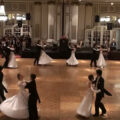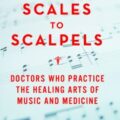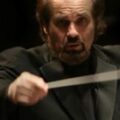Oct 22, 2012
What Makes Scary Music Scary?
We’ve all been there. The music that composers create as soundtracks for suspense and horror films definitely does the job. It amplifies the feelings we are experiencing from the visual images. But, as we may know, often it is the music itself that seems to have the most power. Just turn down the sound on your television while watching those ‘living dead’ stagger across the screen, and they may almost appear comical rather than frightening.
Composers can use a number of musical effects for the purpose of disturbing us. We can cite a few here. Obviously, intense dissonance. . .dissonance that goes on for ‘longer than we can stand it.’ Pitches that clash produce a very real, tense, physical response in us. When a composer keeps this up for a while, they know what it will do to us.
Another technique uses certain timbres that involve having orchestral players produce sound in very specific ways. String players will be asked to play tremolo – a very rapid alternation in bow strokes. To intensify this effect, composers will additionally ask string players to play ponticello by placing the bow very close to the small wooden bridge on which the strings rest. This produces that wonderful ‘finger nails on the blackboard’ sound. Woodwind and brass players might be asked to engage in ‘flutter tongue’ – which might sound erotic. But if the music is dissonant enough, the emotional effect will be unsettling. Obviously, sudden unexpected very loud sounds in real life and in music can be startling. The importance of dynamic and expectations manipulation cannot be overstated.
And while the music from your favorite horror film might do it for you, for me personally there are no horrors quite like those very real ones we human beings visit upon each other. One of these has been captured in a very short musical composition (6 minutes) by Arnold Schoenberg entitled A Survivor from Warsaw. In this narrated music, written just after World War II in 1947, Schoenberg dramatizes a fictional recounting of a Holocaust survivor’s experience in the infamous Warsaw Ghetto in Poland at the hands of Hitler’s SS troops.
Music or life does not get any scarier than this. You will find all the musical devices mentioned above – and more – in this concise musical composition. A one-page article about it may be found on the Music and the Holocaust website. YouTube performances I would recommend are Simon Rattle’s for its visual starkness and superb playing, and Horst Stein’s for Hermann Prey’s very clearly enunciated English narration. You will understand his every word. Wikipedia’s article contains the full texts spoken and sung in the music and it might be good to read them before you listen. In both versions you will be able to see the musical effects I’ve described being produced – close up.
I first encountered Schoenberg’s A Survivor from Warsaw when I performed it earlier in my career as a member of the Brooklyn Philharmonic under Lukas Foss at Carnegie Hall. Warning: I cannot listen to this music without completely and utterly breaking down.








